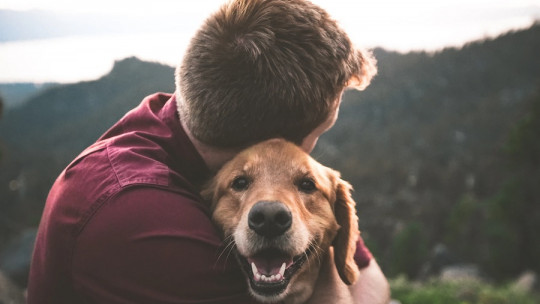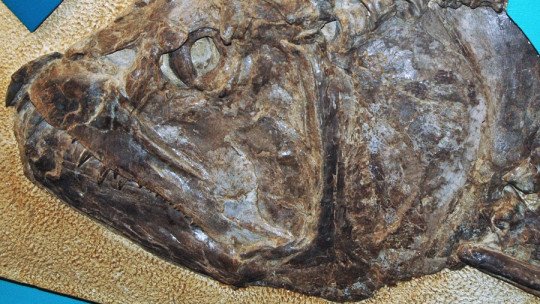It is often said that nature is cruel This popular expression could be true at least from our perspective, considering that many of the beings that populate the planet resort to violence with the firm intention of surviving (leaving behind overwhelming scenes from the perspective of the human eye).
Such observations motivated many years to suspect that aggressiveness was an adaptive trait, and in fact it could be considered so if we only focused on inter- and intraspecies conflict as a criterion for judgment.
However, various theories also suggest that evolution may reward animals (including humans) that do not resort to aggression as part of their behavioral repertoire, through different mechanisms (such as collaboration in obtaining food) that increase your chance of staying alive.
In this article we will address precisely this issue, focusing on an essential concept: self-domestication Examples of its effects in the behavioral, physiological and morphological sphere of living beings will also be detailed.
What is self-domestication
Self-domestication is a theoretical postulate that proposes that animals, both human and non-human, are subject to a selection process in which particularly their youthful traits are retained That is, aggressiveness relative to adulthood would become a counterproductive trait for survival in environments where collaboration is necessary. In this way, the adaptation process would be facilitated in subjects with a greater capacity for establishing social ties (more related to early stages of development).
The really true thing is that In nature, there are many animals that resort to aggressive behaviors in order to deal with the demands of their environment , since through them they respond to the usual threats with which they live in their daily lives. It is an adaptive quality when there are high levels of competitiveness to conquer the resources necessary for survival, but this virtue is lacking in places or historical moments where violence leads to ostracism within the ecosystem (and subsequently to death). In this sense, domestication would be understood as the deepest form of collaboration between two species, and a fundamental example to evaluate the effect of the possible “friendship” of two animals that inhabit the same space (“domes” is a Latin word that translates as “house”).
When observing any domesticated animal in detail, you not only appreciate changes in their behaviors; but these transcend the morphological, physiological and cognitive dimensions For example, scientific evidence demonstrates that such specimens show different pigmentations (softer tones) than other members of their species; as well as teeth of a smaller size, a substantial flattening in the projection of the jaw/snout, a reduction in the cranial circumference and a substantial similarity with characteristic features of the previous stages of its physical development. That is, they acquire a more friendly or less hostile appearance.
Natural selection leading to domestication can happen both automatically and artificially This last case is the best known, with the dog/wolf being the most obvious exponent to illustrate it. Today we know that the relationship between man and dog had difficult beginnings (with numerous attacks on each other), but that it began to improve after chance encounters in which wolves (canis lupus) approached to human territory to peacefully ask for a little food.
This non-aggressive approach meant that these animals could afford the invaluable help of another different species, establishing a future collaboration between the two that would benefit the survival of both. In this way, new adaptations of wolves would emerge, which would be the most primitive ancestors of what we know as dogs (canis lupus familiaris). Well, this process is based on an interspecies relationship, which has also been reproduced in nature with other animal varieties (spontaneously).
As can be seen, self-domestication necessarily starts from the selection of non-aggressive individuals through integration with other species belonging to the same ecosystem, decisively surpassing the adaptive qualities attributed to aggressiveness (as a confrontation tool). In such a way, Animals with much less tendency to inter/intra species attack would emerge from this as well as with a more refined and prosocial coping style.
What differences exist between domesticated and non-domesticated animals?
The domestication process causes a series of changes in all animals, and this includes humans. Below we will see the three most important, according to the specific dimension to which they could belong: morphology, physiology and behavior.
1. Morphological changes
In general, it can be said that The changes in the appearance of the animal are associated with a kind of regression towards the physical characteristics of the juvenile stage , in which a softening of facial features and corpulence in absolute terms stands out. In many of the species studied (including dogs, primates and pigs) skulls with a smaller perimeter (compared to the average of the species in the wild) and a flattening of the face have been observed, which is known as neoteny (juvenilization of the appearance).
The teeth (which are used as a weapon for aggression) are also reduced in size, and the anatomical discrepancies between the sexes (dimorphism) would be notably diluted, since there is usually greater similarity between female and juvenile physical appearance in most of them. animal species.
2. Physiological changes
Animals subjected to a self-domestication process also show a series of changes in metabolic and endocrine functioning For example, many studies indicate that the hypothalamus-pituitary-adrenal (or HPA) axis is underactivated in a basal state (which would translate into low levels of stress at rest), but that its function would increase rapidly when required. a competitive effort (mediated by steroids).
Many authors interpret this biphasic response as a tendency toward passive coping styles among self-domesticated animals, as well as avoidance of potentially dangerous situations (indisposition to act aggressively).
In the specific case of foxes, significantly higher levels of the neurotransmitter serotonin (5-HT) have been observed among those that have gone through a domestication process, this being one of the fundamental neurobiological modulators of active aggression responses and/or or passive (with predatory intent or defense against attacks). In addition, Functional neuroimaging tests also suggest low levels of limbic reactivity when exposed to threatening situations (more specifically amygdala hypoactivation), which indicates a reduced experience of fear (this emotion being one of those that most frequently triggers defensive aggression responses).
Finally, it has also been observed that domesticated animals show an alteration in their reproductive cycles, and above all a significant increase in their frequency and duration. This physiological process would be accompanied by mating efforts characterized by a reduced incidence of coercive acts (or imposition by force of the one who enjoys greater hierarchical dominance), including more sophisticated and relevant (and even more beautiful) mating rituals.
3. Behavioral and cognitive changes
Behavioral changes are, among all those related to the theory of self-domestication, the most numerous and well-known. They have been described in a wide variety of different animals, but especially among canids and primates (because they are animals close to humans on an evolutionary or relational level). In this way, for example, it is known that wolves are much more aggressive than dogs (which limit themselves to barking in the presence of a rival group), or that bonobos tend to be more peaceful and tolerant than other species of apes. (like the chimpanzee).
It is precisely the latter that have attracted, at least during the last decade, a greater volume of research. Bonobos and chimpanzees can provide information on the attitudinal/social aspects that arise from the self-domestication process since there is a broad scientific consensus that the first of them has experienced it in a much more pronounced way than the second, which merits interesting comparisons of intraspecies interactions in their respective natural environments.
The main conclusions that have been drawn from this are suggestive that (in general) bonobos are animals with a greater “social commitment” with respect to their family and herd, which is manifested in a notable tendency to share food (even in cases in which the recipient has not collaborated in its search or storage). It is also known that they resort more to games and other recreational activities (which do not have an adaptive purpose in themselves), which has been considered an indirect indicator of intelligence.
Bonobos have also proven to be more cooperative animals during interactions with other species, including humans , showing more obedience to instructions whose compliance can provide them with incentives of some kind (food, toys, etc.). Likewise, they also seem much more capable of inhibiting the impulse to achieve a quick but discreet reward, preferring to wait some time to see their reward increase. This fact suggests a greater tolerance for frustration.
The researchers’ conclusions indicate that Bonobos retain many more of the behaviors typical of their early youth, including those that have a prosocial essence , and that they maintain them throughout life. This fact could be one of the consequences of their self-domestication, and obey the differential evolutionary process that they had to face (compared to that of chimpanzees). Both the environment and the concomitant circumstances in their respective “histories” have been postulated as explanatory variables for their differences in habits and customs.
Does it also occur in humans?
Apparently, the answer to this question is yes. There are many studies that suggest that changes in our physical appearance compared to our primitive ancestors (greater cranial sphericity, loss of body hair, decreased muscle mass, flattening of the teeth, retraction of the jaw or general infantilization of the face) obey this process, and that in addition these they relate to our extraordinary cognitive and social milestones; as well as technological and even creative/artistic ones
The face of the modern human being has exceptional neotenic properties in nature (youthful appearance). In fact, the face of the adult male is considered to be very similar to that of an adolescent Neanderthal. This process (which also took place in other extinct hominid species, presenting itself in the form of a mosaic) has developed in parallel with man’s distancing from wild nature and his approach to societies in which multiple specimens participated (whose functioning required extraordinary cognitive skill).
In summary, the changes that arose from life in large communities and collecting habits They not only shaped our physical appearance, but also the way we interact with others and the environment that surrounds us The human self-domestication process, understood as the tendency towards intraspecies collaboration, can be fundamental to understanding who we are and why.









